
IRRIGATION SCIENCE
Scope & Guideline
Advancing sustainable water management for a greener future.
Introduction
Aims and Scopes
- Irrigation Efficiency and Management:
Research on methods and technologies to improve the efficiency of irrigation systems, including drip, sprinkler, and surface irrigation. This includes studies on water use efficiency, irrigation scheduling, and the impact of different irrigation practices on crop yield. - Crop Water Requirements and Coefficients:
Investigation into the water requirements of various crops under different climatic and soil conditions. This includes the establishment and validation of crop coefficients and the assessment of evapotranspiration rates. - Soil-Water-Plant Relationships:
Exploration of the interactions between soil moisture, plant physiology, and irrigation practices. This area includes studies on water stress effects, nutrient uptake, and the physiological responses of plants to different irrigation regimes. - Technological Innovations in Irrigation:
Development and application of new technologies such as remote sensing, UAVs, and IoT for monitoring and managing irrigation systems. This includes data-driven approaches to optimize irrigation practices based on real-time data. - Environmental Impact of Irrigation Practices:
Assessment of the environmental consequences of various irrigation methods, including the effects on soil health, water quality, and ecosystem sustainability. This scope also encompasses the use of recycled water and its implications for agricultural practices.
Trending and Emerging
- Precision Irrigation Technologies:
There is an increasing emphasis on precision irrigation techniques that utilize data from soil moisture sensors, UAVs, and remote sensing technologies. This trend is crucial for optimizing water use and improving crop yields in variable climatic conditions. - Sustainable Water Management Practices:
Research focused on sustainable irrigation practices, including the use of reclaimed water, mulching, and deficit irrigation strategies, is gaining traction. This reflects a broader concern for water conservation and environmental sustainability in agricultural practices. - Integration of Machine Learning and Data Analytics:
Emerging studies are increasingly employing machine learning algorithms and data analytics to predict irrigation needs and optimize water use. This trend highlights the importance of data-driven decision-making in modern irrigation management. - Climate Change Adaptation Strategies:
Research addressing the impacts of climate change on irrigation practices and crop water requirements is becoming more prominent. This includes studies on irrigation adjustments in response to changing weather patterns and their implications for food security. - Impact of Irrigation on Soil Health and Ecosystem Services:
There is a growing focus on understanding how different irrigation practices affect soil health and ecosystem services. This includes studies on soil salinity, fertility, and the role of irrigation in maintaining ecological balance.
Declining or Waning
- Traditional Irrigation Practices:
There is a noticeable decrease in studies focusing solely on conventional irrigation methods without integrating modern technologies or sustainability aspects. This shift reflects a broader move towards innovative practices that enhance efficiency and reduce environmental impacts. - Generalized Crop Studies without Contextual Adaptation:
Research that does not tailor irrigation practices to specific local conditions, such as climate or soil type, is becoming less frequent. The focus is now more on localized studies that consider the unique characteristics of specific agricultural systems. - Basic Agronomic Studies:
The publication of papers that focus solely on agronomic practices without a clear link to irrigation technology or water management strategies is declining. The trend is moving towards interdisciplinary studies that combine agronomy with advanced irrigation methodologies.
Similar Journals
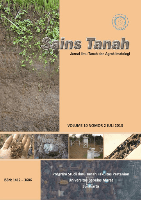
SAINS TANAH
Exploring Soil Science for Global ImpactSAINS TANAH is a renowned peer-reviewed journal that focuses on the fields of agronomy, soil science, and environmental studies, published by Universitas Sebelas Maret Surakarta in Indonesia. Established as an Open Access platform since 2001, it aims to disseminate high-quality research that addresses critical issues in soil health, crop management, and pollution, thereby fostering sustainable agricultural practices. With its current impact factor demonstrating a Category Quartile ranking of Q3 and Q4 in major areas such as Agronomy and Crop Science, Atmospheric Science, and Pollution, SAINS TANAH serves as an essential resource for researchers, professionals, and students dedicated to advancing knowledge and solutions in these vital fields. By providing a collaborative environment and upholding rigorous academic standards, the journal not only highlights the significance of Indonesian research contributions but also aims to connect local insights with global agricultural and environmental challenges.

Turkish Journal of Field Crops
Fostering Excellence in Field Crop ResearchTurkish Journal of Field Crops is a prestigious peer-reviewed publication dedicated to advancing the field of agronomy and crop science, published by the Society of Field Crop Science. With an ISSN of 1301-1111, this journal serves as a crucial platform for researchers and professionals to disseminate innovative findings and discuss practical applications in crop cultivation and management. Hailing from Turkey, it aims to address the pressing challenges facing agriculture in both regional and global contexts, particularly over its converged years from 2009 to 2024. As a Q3 ranked journal in the Agronomy and Crop Science category with a Scopus ranking of #259/406 and a percentile of 36th, it fosters high-quality research that contributes to the sustainable development of field crops. Though it operates under various access options, this journal is committed to providing valuable insights into agronomic practices, aiming to bridge the gap between theory and application for scientists, educators, and practitioners alike.
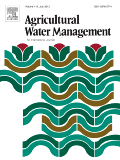
Agricultural Water Management
Unleashing Research to Tackle Water Challenges in AgricultureAgricultural Water Management, published by ELSEVIER, is a leading journal in the fields of agronomy, soil science, and water resource management. With an impressive impact factor reflecting its relevance and authority—ranking Q1 in multiple categories including Agronomy and Crop Science, Earth-Surface Processes, Soil Science, and Water Science and Technology—the journal serves as a critical platform for groundbreaking research and innovative practices aimed at enhancing agricultural sustainability and efficient water use. Operating since 1976, it has maintained a strong commitment to disseminating high-quality scholarly work that addresses contemporary challenges in water management related to agriculture across diverse environments. Readers can expect to find a spectrum of research articles, review papers, and case studies that not only contribute to scientific knowledge but also inform policy and practice for professionals in the field. While not open access, the journal remains a pivotal resource for researchers, practitioners, and students keen to advance their understanding of agricultural water issues and their implications for the global ecosystem.

POTATO RESEARCH
Transforming agriculture, one potato at a time.POTATO RESEARCH is a prestigious journal dedicated to advancing the scientific understanding of potato cultivation and its wider implications in the fields of agronomy, crop science, and food science. Published by Springer in the Netherlands, this journal boasts an impressive impact factor and ranks in the Q2 category for both Agronomy and Crop Science, as well as Food Science in 2023, affirming its significant contribution to these disciplines. With over five decades of research converged from 1970 to 2024, POTATO RESEARCH serves as a vital platform for researchers, professionals, and students interested in the latest findings and innovations that affect potato production and processing. Although it is not an open-access journal, it remains a crucial resource for those dedicated to enhancing agricultural sustainability and food security. For inquiries or submission details, please refer to their office located at Van Godewijckstraat 30, 3311 GZ Dordrecht, Netherlands.
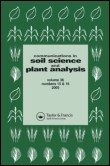
COMMUNICATIONS IN SOIL SCIENCE AND PLANT ANALYSIS
Elevating the Standards of Soil and Plant ResearchCOMMUNICATIONS IN SOIL SCIENCE AND PLANT ANALYSIS, published by Taylor & Francis Inc, is a prestigious journal dedicated to advancing research in the fields of agronomy, crop science, and soil science. Established in 1970, the journal has maintained a significant presence over the years, with a commitment to publishing high-quality, peer-reviewed articles that contribute to the understanding of soil and plant interactions. With an impressive Q2 ranking in both Agronomy and Soil Science, it positions itself as a vital resource for researchers, professionals, and students alike, keen on exploring innovative solutions to contemporary agricultural challenges. Although it currently does not provide open access, the journal ensures wide dissemination through its established subscription services. The journal's focus on empirical research, methodologies, and technological advancements in soil management and plant nutrition makes it an essential platform for disseminating knowledge and fostering discussions within the scientific community. Located in the heart of Philadelphia, USA, it remains a significant contributor to the global dialogue on sustainable agriculture and environmental stewardship.

VADOSE ZONE JOURNAL
Pioneering research at the forefront of soil and water dynamics.Vadose Zone Journal, published by Wiley, is a premier Open Access journal dedicated to advancing research in the dynamic field of soil science, particularly focusing on the vadose zone—the area of soil above the groundwater table that plays a critical role in hydrological processes. Since its inception in 2002, the journal has provided a platform for high-quality, impactful research, reflected in its impressive ranking among the top 25% of journals in the Soil Science category. With an increasing emphasis on sustainable agricultural practices and environmental protection, the Vadose Zone Journal offers invaluable insights and innovative methodologies that cater to the needs of researchers, practitioners, and students alike. Located in Hoboken, NJ, the journal operates on a fully Open Access model since 2018, ensuring that cutting-edge findings are readily accessible to a global audience. Join the community of experts and make significant contributions to our understanding of critical soil processes through this esteemed publication.
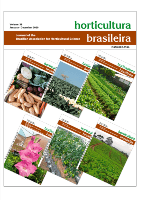
Horticultura Brasileira
Exploring the depths of plant science and soil research.Horticultura Brasileira is a leading open access journal published by the ASSOC BRASILEIRA HORTICULTURA, dedicated to advancing research in the fields of horticulture, plant science, and soil science. With an ISSN of 0102-0536 and an E-ISSN of 1806-9991, this journal has been an integral part of the scientific community since its inception, embracing open access practices since 1999. Based in Brazil, it provides a platform for researchers to disseminate their findings and contribute to the growing body of knowledge in horticultural science and related disciplines. Despite its current Q3 ranking in multiple categories such as Horticulture, Plant Science, and Soil Science within Scopus, the journal continues to attract a diverse array of scholarly articles, fostering innovation and collaboration among scientists. The journal aims to bridge the gap between research and practical applications, making it an invaluable resource for students, professionals, and academics alike who are looking to expand their understanding and impact in the field.
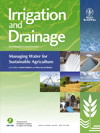
IRRIGATION AND DRAINAGE
Exploring the synergy of soil health and crop productivity.IRRIGATION AND DRAINAGE, published by Wiley, is a prestigious academic journal that focuses on the critical fields of agronomy, crop science, and soil science. With an ISSN of 1531-0353 and an E-ISSN of 1531-0361, this journal serves as an essential platform for disseminating innovative research and insights relevant to the management of irrigation systems and drainage in agricultural practices. Based in the United Kingdom, the journal has shown a significant impact in its field, boasting a 2023 ranking in the Q2 quartile for both Agronomy and Crop Science and Soil Science. It ranks #149 out of 406 in Agricultural and Biological Sciences for Agronomy and Crop Science, and #66 out of 159 in Soil Science, placing it within the 58th to 63rd percentiles. This journal not only aims to advance knowledge in the sustainable management of water resources and soil health but also encourages open access to its content, making significant findings more accessible to researchers, professionals, and students alike. As it approaches its convergence period from 2001 to 2024, the importance of IRRIGATION AND DRAINAGE in shaping effective agricultural strategies continues to grow, fostering dialogue and innovation among its readership.
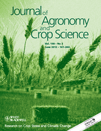
JOURNAL OF AGRONOMY AND CROP SCIENCE
Driving excellence in agronomy and crop science research.JOURNAL OF AGRONOMY AND CROP SCIENCE, published by Wiley, stands as a leading platform in the fields of agronomy and crop science, reflecting its commitment to advancing knowledge through rigorous research. With an impressive H-index that signifies its scholarly impact, this journal has consistently maintained a prestigious Q1 ranking in both Agronomy and Crop Science, and Plant Science as of 2023. With a robust ranking of #46/516 in Plant Science and #39/406 in Agronomy and Crop Science according to Scopus, it sits comfortably within the top percentiles, emphasizing its relevance and authority in the academic community. The journal has been a vital resource since its inception in 1973, with ongoing coverage until 2024, making it an essential reference for researchers, professionals, and students looking to navigate the latest developments and insights in crop management and agricultural practices. Although it does not currently offer open access options, JOURNAL OF AGRONOMY AND CROP SCIENCE remains committed to providing high-quality, peer-reviewed content that fosters innovation and encourages sustainable solutions within the agronomy sector.

Water Resources and Irrigation Management-WRIM
Empowering Research for Agricultural SustainabilityWater Resources and Irrigation Management (WRIM), published by Universidade Federal do Recôncavo da Bahia, is a vital academic journal focused on the essential fields of water resources and irrigation practices. With an ISSN of 2316-6886, this journal aims to disseminate high-quality research that addresses the challenges of sustainable water management in agricultural settings, particularly in the unique contexts of Brazil and similar ecosystems. The journal emphasizes rigorous empirical studies, innovative approaches, and policy implications, positioning itself as a key resource for researchers, practitioners, and students engaged in water resource management and agricultural sustainability. Although currently not available as Open Access, WRIM is dedicated to advancing knowledge in this critical area, encouraging collaboration and discourse among professionals passionate about optimizing irrigation systems and environmental stewardship.